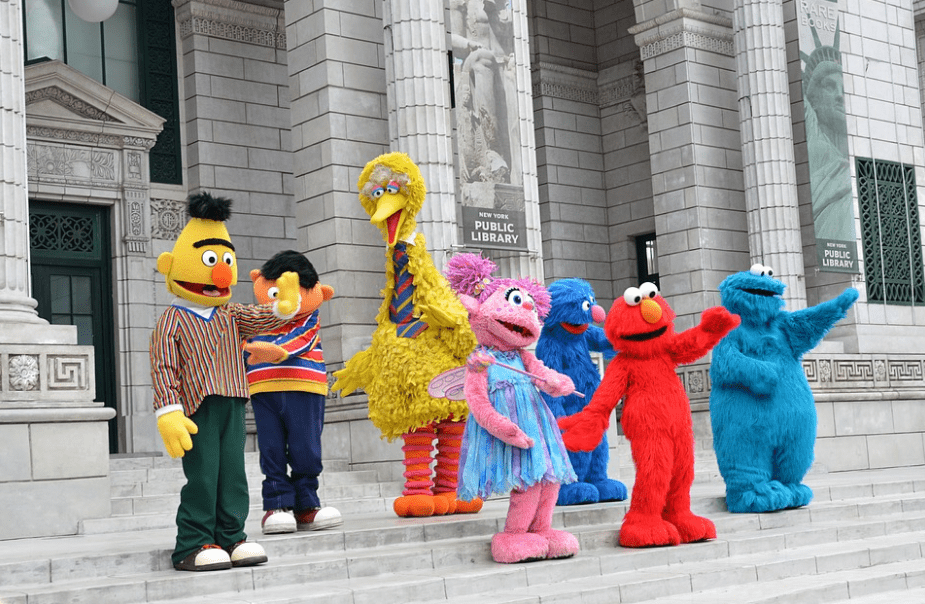Sesame Street premiered on November 10, 1969, on PBS to positive reviews and high ratings. While it has attracted some controversy, the impact is overall positive: it is this show where kids learned ABCs, 123s, different shapes, and colors. It is where kids were introduced to Jim Henson’s wonderful Muppet characters like Big Bird, Bert and Ernie, Cookie Monster, Elmo, Grover, Guy Smiley, Count Dracula, and Kermit the Frog.
But Sesame Street has proven to be much more than just a tool of teaching kids the rudimentary lessons or a show hosting adorable puppet characters.
Sesame Street has indeed broken many grounds in the world of television – and beyond. The makers behind the show defied naysayers who were convinced that television couldn’t be used as an educational tool, and kids won’t have anything to do with it. And over 50 years of history have vindicated them.
There were definitely a handful of pioneer children’s TV shows that preceded Sesame Street. However, most of them appealed to the lowest-common denominator, based on people’s beliefs that kids would watch pretty much anything on television (because they definitely would).
But Sesame Street changed that. Even if you take away the educational aspects of the show, it was filled with wonderful, well-thought-out characters who could speak to the children at their level. It was full of humor (in a peculiar way) and catchy songs, to boot. And it presented a sense of possibility that anyone – from Big Bird to First Lady Michelle Obama – could come round Sesame Street and be comfortable in its environment.
Sesame Street also proved that society – and most especially the younger ones – could get something good out of television. It came at the right time when American TV during the 1960s fed their audiences with nothing but mindless junk, which prompted Newton N. Minnow, Chair of the Federal Communications Commission at the time, to describe television as a “vast wasteland.” When Sesame Street premiered, it was like a breath of fresh air.
Sesame Street stated that its mission was to focus on educating preschool children, something that was quite unprecedented in American television. The makers of the show mainly focused on the inner-city kids who watched lots of television. Sesame Street‘s concept proved to be successful. Preschool children weren’t seen as capable of absorbing information, but Sesame Street proved that these kids could learn to read ABCs and count 123’s even before they got to enter classrooms for the first time. Young children are like sponges – they will absorb everything they see and hear. At this stage of their lives, they are making significant developmental strides. Sesame Street stresses the importance of education in younger children as the key to unlock their potential.
Long before adult-oriented TV programs got to address sensitive issues candidly, Sesame Street became the first to do so. It was already tackling big issues such as racism, disability, home eviction, and neurodiversity with its preschool-age audience. It even bravely tackled usually taboo subjects such as death. The episodes, in turn, would show segments filled with silly sketch comedies or silly parodies of pop culture. That’s how diverse Sesame Street’s storytelling is, as it is a reflection of the real world that children might have seen it.
Speaking of diversity, Sesame Street also welcomes diversity in its characters. For the show’s creators, people are diverse in the world of Sesame Street, just as they are outside of it. Sesame Street has always done its best to have its characters who reflect any children who might be watching this at home. And in doing so, Sesame Street has introduced the kind of diversity that many television shows have embraced today.
The success of Sesame Street is quite undeniable. Its format has crossed outside American borders and adapted itself to different cultures. While the American Sesame Street parent episodes have been shown in many parts of the world, it has also spawned several different versions in many countries from Germany to China, and even in regions occasionally torn by conflicts, such as Israel and Palestine. No doubt about it – Sesame Street’s impact has been profound not just in America but also overseas. Sesame Street was a positive influence in shaping the young minds. As long as it exists, it will continue to be so for future generations.

